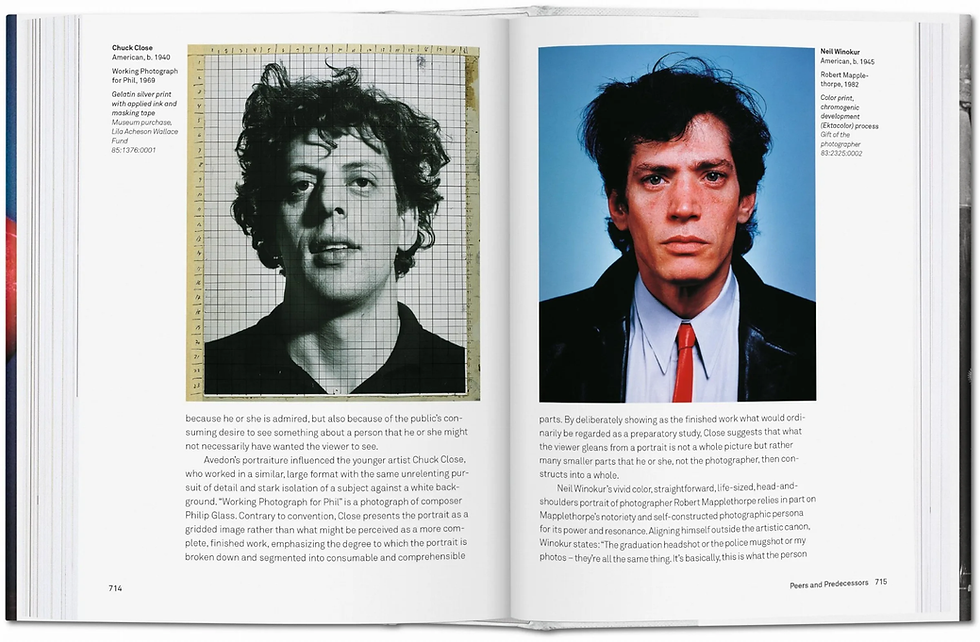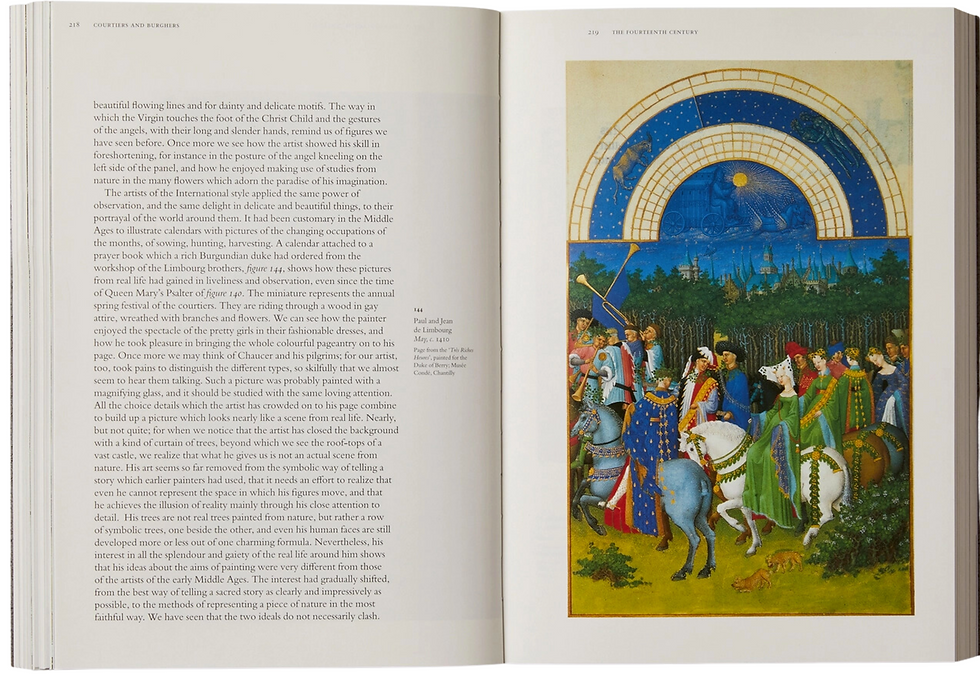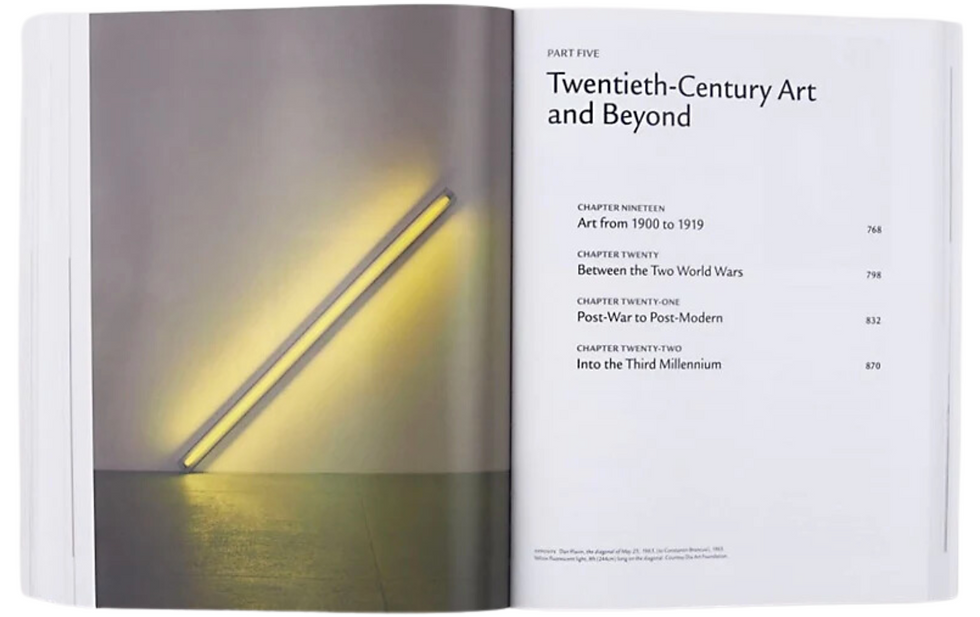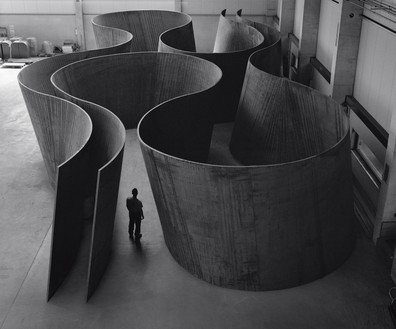Book Club
- Adrianne Weber

- Nov 1, 2023
- 4 min read
We asked Carlotta Quadranti, our strategy manager and Art History graduate, to discuss her favourite art publications. We explored a range of publications, from more general ones to texts that significantly influenced her understanding of art history.
William Johnson, Carla Williams, A History of Photography: From 1839 to the Present (Taschen)
George Eastman, founder of Kodak, embarked on a remarkable professional journey that transitioned him from a humble delivery boy to a prominent and influential businessman, solidifying his place in history. Following his demise, his residence transformed into a globally recognised institution dedicated to the preservation and exhibition of photography and cinema. Presently, it boasts the most extensive assemblage of its genre worldwide.
With a commendable writing quality, this overview of the history of photography delves into the intricate and captivating chronicles of photography, spanning from the inception of the earliest camera to the contemporary period.
The primary purpose of this book is to serve as a companion to the George Eastman collection, showcasing a diverse selection of photographs from the collection. Nevertheless, as a comprehensive account of the history of photography, it engrosses and captivates readers by its compelling narratives and breathtaking visual imagery, which have the potential to ignite inspiration inside aspiring photographers of any level of expertise.
E. H. Gombrich, The Story of Art (Phaidon)
The renowned work titled The Story of Art by E. H. Gombrich is widely regarded as a classic, a status it has earned through deliberate means. This book is particularly well-suited for those seeking a comprehensive grasp of the subject matter, as it presents information in a lucid and concise manner, allowing for a smooth and accessible reading experience.
E. H. Gombrich's seminal work provides a comprehensive examination of the evolution of art throughout many historical periods, spanning from antiquity to the contemporary age. Originally published in 1950 by Phaidon, this book is recognised as a significant piece of criticism and is considered to be one of the most easily comprehensible introductions to the field of visual arts.
Hugh Honour and John Fleming, A World History of Art (Laurence King Publishing)
The book encompasses a comprehensive and intellectually rigorous exploration of the entirety of global art history. It may present a higher level of complexity in terms of complete comprehension, therefore rendering it more suitable for consultation purposes, particularly for those seeking information on a specific historical era of interest. The text exhibits a high level of literary proficiency, displaying careful consideration, contemporary relevance, and a relatively recent publication date. Moreover, the book is extensively illustrated and provides insightful discussions on architectural aspects that may pique your curiosity.
Hal Foster, The Art-Architecture Complex (Verso Publishing)
The Serpentine Gallery in London, a place dedicated to visual art, annually exhibits a pavilion designed by an architect and sold to collectors as if it were an artwork. "Minimalism" has evolved from an artistic movement to an architectural style to an interior design option. With architecture progressively resembling art, and art progressively resembling architecture, Hal Foster's aim to dig deeper into their interrelation doesn't come off as an utter surprise.
Foster begins by discussing the most significant architectural movements of the last fifty years, such as the influence of pop art on postmodernism and the hi-tech architecture of Richard Rogers, Renzo Piano, and Norman Foster, which eventually led to a "global style" of steel and glass that is essentially "identical" everywhere.
Foster describes the impact of Russian suprematist and constructivist art on Zaha Hadid, as well as the influence of conceptual art on the American architects Diller Scofidio + Renfro, who designed the High Line park in New York. He also surveys the use of both minimalism and pop elements by the Swiss architects Herzog & de Meuron, who designed the Tate Modern and the Bird's Nest stadium in Beijing. Before concluding with a lengthy interview with Serra, he examines the subject from the opposite perspective, reviewing the spaces and constructions of artists such as Dan Flavin, Donald Judd, Robert Irwin, and (especially) Richard Serra.
Foster's perspective on the convergence of art and architecture is characterised by a high degree of intellectual rigour that is refreshing. His exhaustive analysis of modernist and contemporary artistic/architectural practises is truly enthralling. His premises are persuasive, fascinating, and thought-provoking. Definitely a book worthy of your attention.
Linda Nochlin, Women, Art, and Power and Other Essays (Routledge)
Linda Nochlin gained prominence for her pioneering 1971 essay "Why Have There Been No Great Women Artists?" which signaled the beginning of a critical feminist art history.
The language of feminist inquiry may have changed dramatically, but the questions Nochlin raised during the early 1970s remain central to current feminist art historical projects addressing issues of gender, production and representation. The book spans twenty years of feminist art history, offering a captivating perspective on both the field itself and Nochlin's career as one of the foremost feminist art historians. The ongoing relevance of the seven essays featured in the book lies in their ability to persistently provoke critical examination, as they address contemporary concerns that remain pertinent. Nochlin’s arguments are thought-provoking and groundbreaking. The book exhibits a writing style that is easily comprehensible, accompanied by intelligent and often witty combinations of visual elements. Nochlin's impressive and unique understanding of the complexities of visual communications and social context are the perfect starting point for further investigations.
.png)




